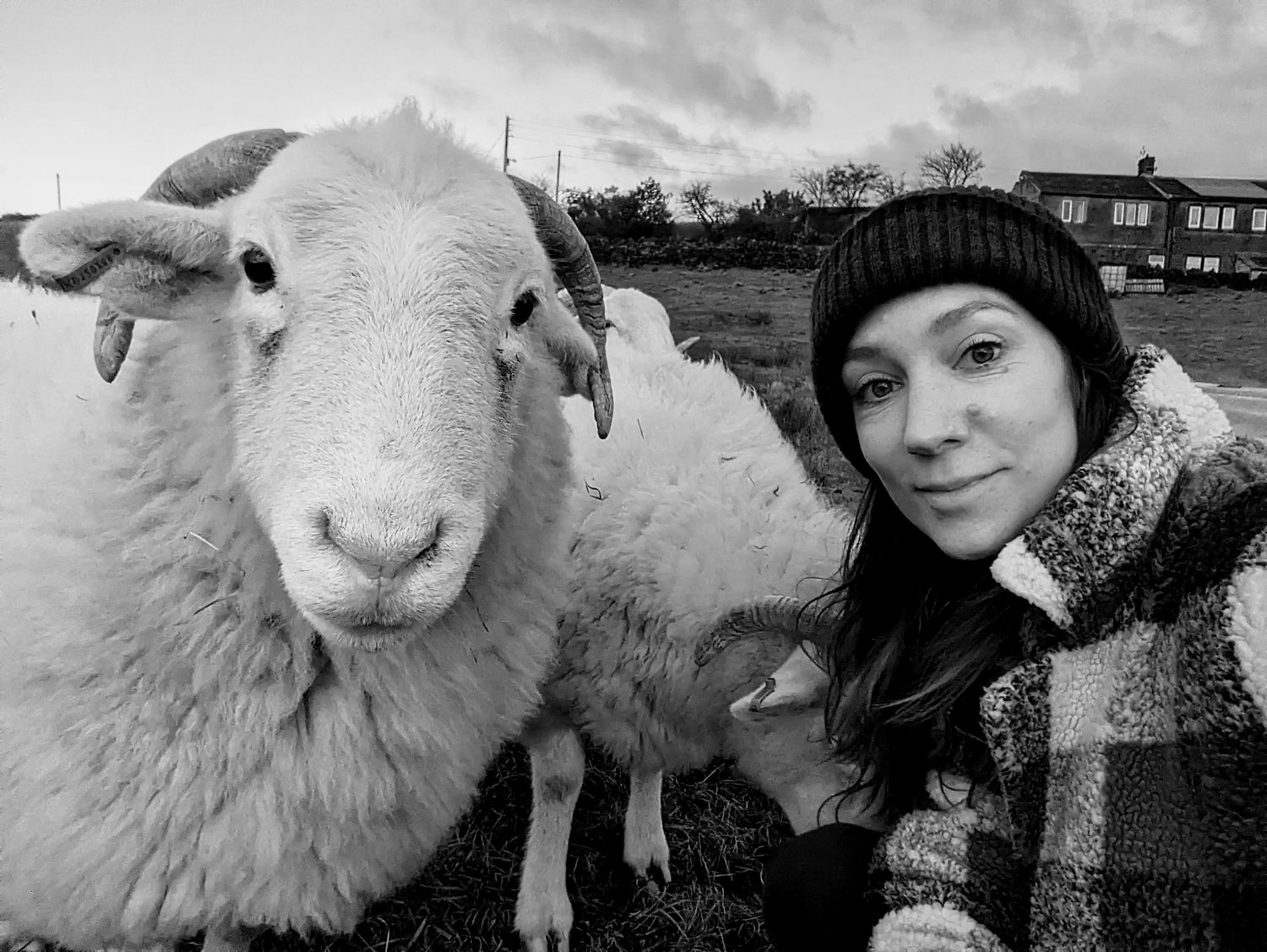Rare Breed Week: Whitefaced Woodland

Join us as we speak to the breeders and crafters who are helping to keep our rare breeds going! Today we're finding out about the Whiteface Woodland, writing and images by Lucy Bywaters.
Hello, I’m Lucy and I’m the creator of Naturally Woodland; a small farm diversification business based around my flock of Whitefaced Woodlands. The sheep very much came first with the flock being established by my parents back in 1993 when they were searching for a hardy breed that would do well on poor ground. The flock was to be a breeding flock primarily and so being able to help increase numbers of a native rare breed was also a key consideration. It just so happened that the “local” sheep breed to where we are in Holmfirth, West Yorkshire, fitted the bill and as such, the Muslin Hall flock was born.
As a breed Woodlands are great, and extremely versatile. Both sexes have horns, which gives them a striking look as well as coming in useful when handling them. They live up to their name with white faces, but also have white legs and fleece, pink noses and lovely golden eyes. I may be a little biassed, but they really are beautiful sheep, and they have the character to match. They’re hardy with an intelligent and inquisitive nature; the ewes are brilliant mothers and the lambs are quick to be up on their feet and suckling.
These wonderful breed characteristics have enabled me to take my Woodlands in a direction that just a few years ago I’d have laughed at if someone had suggested it. When I had the idea for Naturally Woodland, I wanted to create something that would showcase the breed as well as demonstrate what you can make using their beautiful produce. The obvious by-product from sheep is wool, and I’ve loved using the wool from my flock to create things for years, so this had to be a part of the venture. However, one of the other potential by-products from sheep is milk. Being a hill breed, Woodlands are far from a milking sheep, but for the past 2 years I’ve been milking a small selection of my ewes over the summer months, and using it to make sheep’s milk soap. You might be wondering why you would put sheep’s milk into soap… Well, sheep’s milk has a unique composition rich in fatty acids, proteins and vitamins, which provides excellent moisturising and skin-nourishing properties, and creates a lovely creamy lather. Thankfully I don’t need gallons of the stuff to produce soap, and so the ewes rear their lambs as normal, but with me also taking a bit extra from them in return for food - most of them are easily bribed! They love the special treatment and it all works out nicely for the ewes, the lambs and myself.
As I said, I knew I wanted to make wool a part of Naturally Woodland and so it’s given me an opportunity to develop my crafting skills and enjoy being creative. The nice thing about Woodland wool is that it’s finer and softer than most hill breeds. It’s a real all rounder too - it spins up nicely, peg looms wonderfully and doesn’t do too bad for felting either. My go to craft is weaving using a peg loom; I think it’s great that you can create such lovely items with such a simple and historic piece of equipment. As well as rugs and pet mats I’ve really enjoyed creating different pieces such as woolly foot warmers, and the current project is peg loom cushions. I’ve yet to try a circular piece, but it’s definitely on the to-do list! I’m also now starting to share this craft with others through running peg loom workshops. Farmers and smallholders are becoming more keen to find a way of making their wool worth something and so teaching them this historic craft provides them with that possibility.
Overall Woodland wool is a fantastic product, however one of the downsides, if you can call it that, is that it’s all white in colour. I know from the experience of others that it’s great for dyeing, and I would love to try using natural dyes one day. (Another point on the to-do list…) I love my Woodlands and I wouldn’t be without them, but perhaps this would be my only reason or excuse to get another breed as well; adding a bit of colour to my homegrown wool options.
Thankfully the future is getting brighter for Woodlands with numbers increasing and new flocks popping up all across the UK. They’re great for woolly crafting, great for new sheep keepers, great for on poorer ground, great for conservation grazing, great for crossing with a commercial tup, great as a small pedigree flock, and generally great for almost anything! I’ll continue to do my bit by showcasing the breed and telling their story as part of Naturally Woodland.
You can follow the flock on Facebook and Instagram using the links below, and also take a look at the website as well.
If you'd like to find out more about the Whitefaced Woodland you can check out the Whitefaced Woodland Sheep Society or the RBST.







